Find your way around the best cheeses in Spain, how to eat them and what with
By Nick Nutter | Updated 21 Dec 2022 | Andalucia | Recipes |
Login to add to YOUR Favourites or Read Later
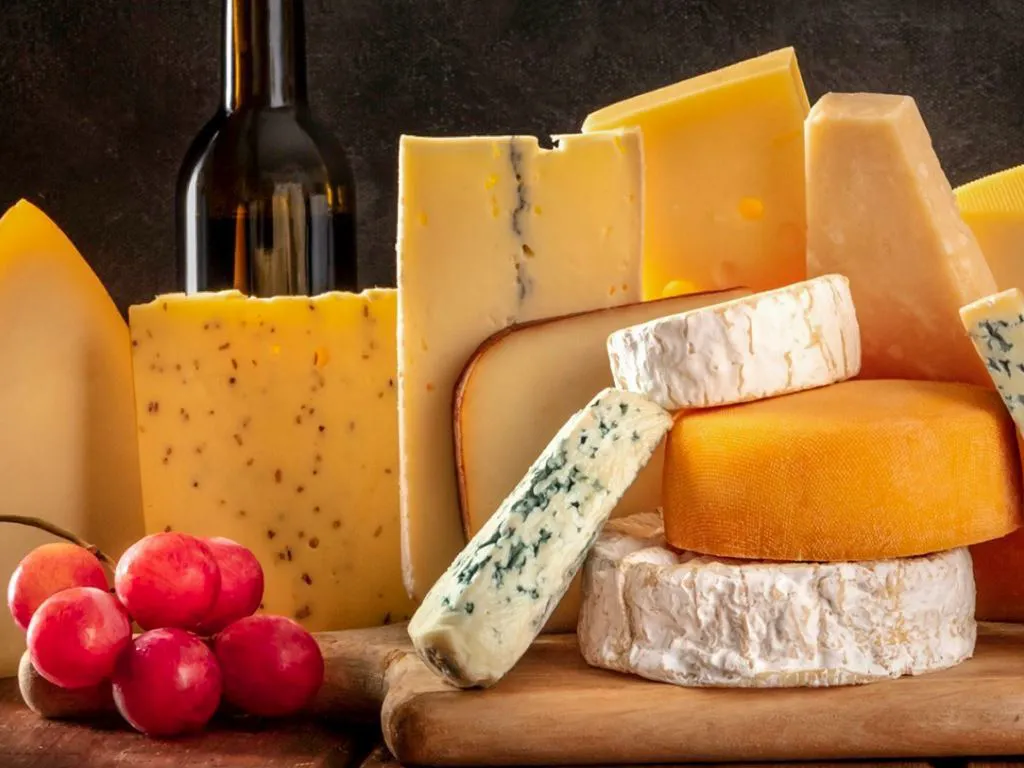
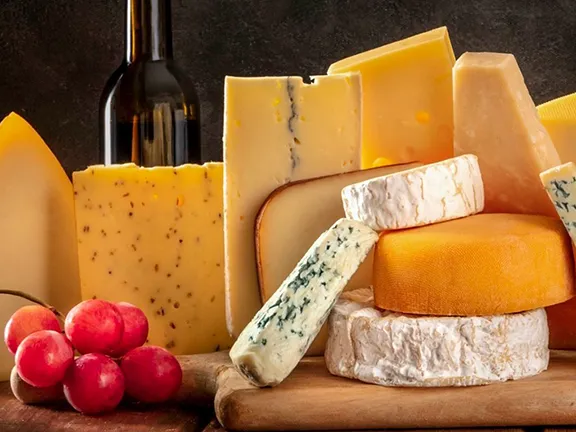
A Selection of Spanish Cheese
Although Spain ranks third within the European Union for the number of varieties of its cheeses, just behind France and Italy, of the 26 cheeses certified as denominaciones de origen protegidas or Protected Domination of Origin cheeses (DOPs), none originate in the region of Andalucia.
However, the better supermarkets within Andalucia do offer a selection of these quality cheeses from other regions, each of which has its own characteristics.
It is also good fun to explore the small town and village grocery shops in the areas these cheeses are produced. Over the years we have found some excellent cheeses, all with the DOP accreditation, but produced by individual cooperatives in the villages in insufficient quantities to supply the chain stores.
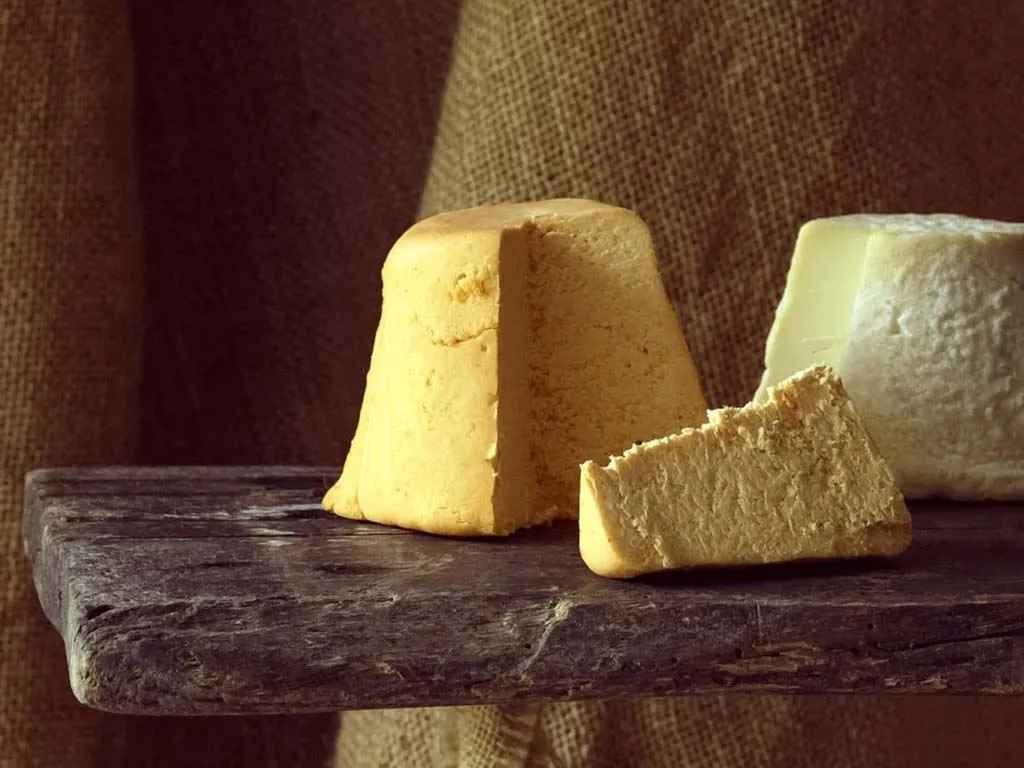
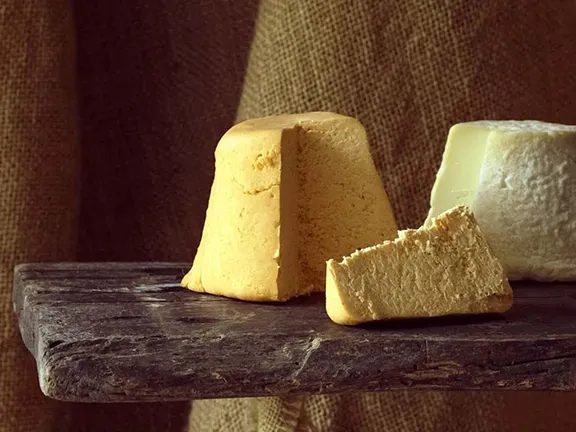
Afuega’l pitu is one of the oldest cheeses in Asturias and can be traced back to the 18th century. It is made from unpasteurised cow’s milk and has a creamy, acidic flavour with a yellowish-white rind. Paprika is sometimes added in which case the rind will be orange.
Cabrales is the best known of the Asturian cheeses. Cabrales is a blue cheese that can either be made from unpasteurised cow’s milk or mixed with sheep or goat milk. It is semi-hard but has a creamy texture with a sharp acidic taste. It is often used in sauces or made into croquetas.
Casín is a full cream cheese made from unpasteurised cow’s milk, this cheese is made in a unique way by kneading the curds. It smells of cured butter and has a slightly spicy and bitter taste. This is a good dessert cheese.
Gamonéu sometimes referred to as Gamonedo cheese is a fatty blue cheese. It has a slightly smoky flavour and is made from a combination of cow, sheep and goat milk. There are two different varieties – Gamonéu del Puertu, which is hard and Gamonéu del Valle, which is rich and creamy. Both are good with bread or cheese biscuits.
Los Beyos cheese is typically produced in the Picos de Europa mountain range and is a hard or semi-hard cheese made from either cow, sheep or goat milk which is matured for between 20 and 60 days. It is a light, fresh tasting cheese with a tangy aftertaste. Try this cheese with sweet fruit like grapes or Kiwi fruit, or even apple pie.
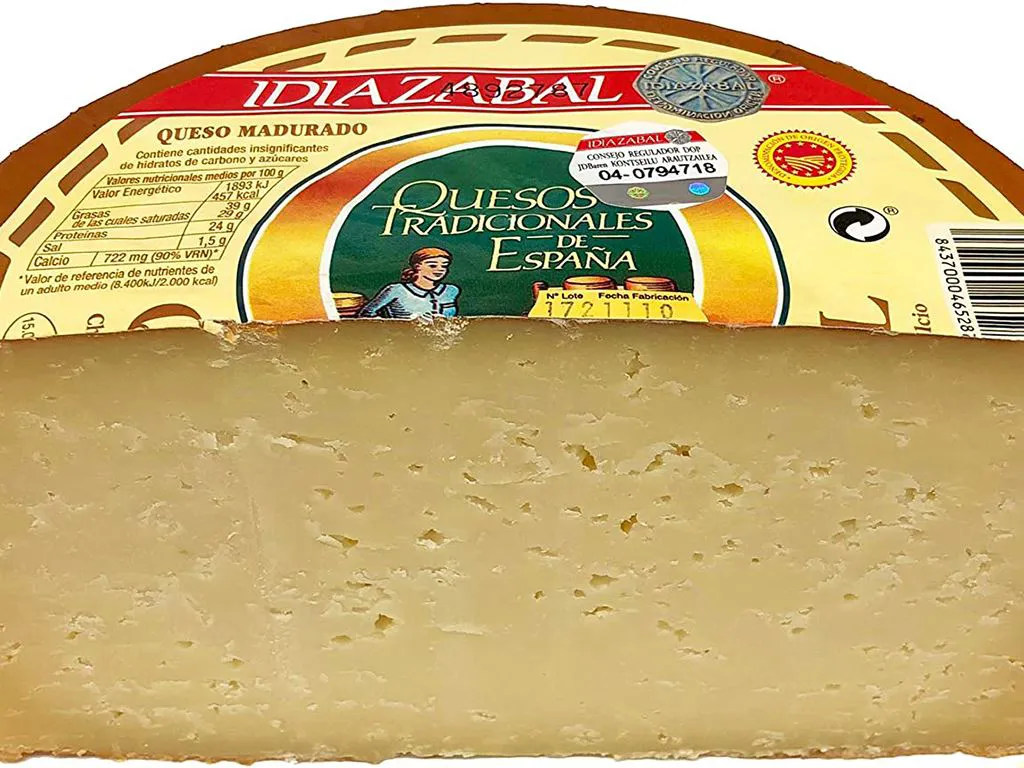
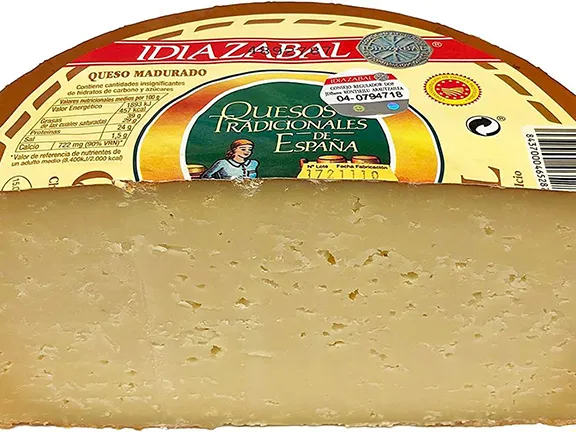
Idiazabal is the Basque Country’s most famous cheese. It can be found in savoury and sweet dishes from all over the region. It is made from unpasteurised sheep’s milk from Latxa and Carranzana sheep. It is an aged cheese with a very slightly smoky flavour. Try it in a mushroom and cheese risotto.
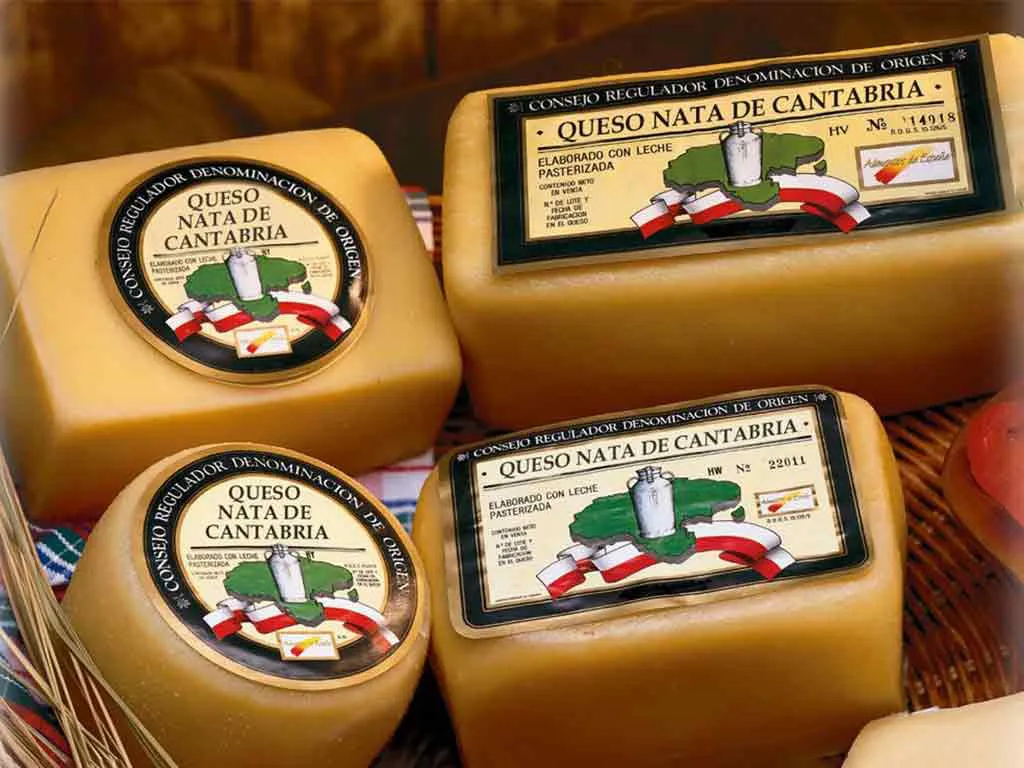
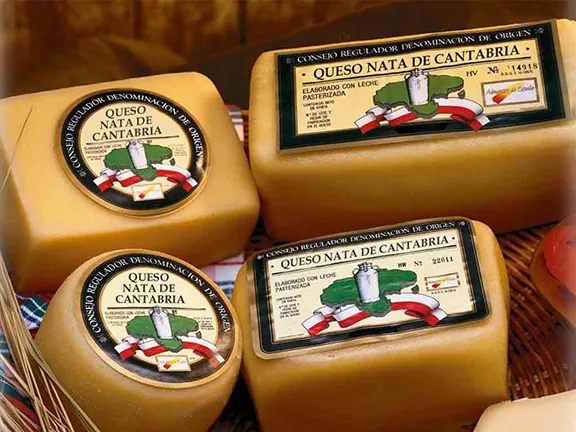
Nata de Cantabria, literally 'Cream of Cantabria', is made from milk from Friesian cow’s milk. It is a soft cream cheese, light and mild and is often eaten for dessert or for melting. Great for cauliflower cheese.
Picón Bejes–Tresviso is a unique blue cheese, made with fresh cow, sheep and goat milk and has a strong intense flavour. It is matured in caves found in Liébana region for a minimum of two months. This cheese is one for the connoisseur, eaten as a dessert cheese. I also discovered it makes a fantastic, simple, blue cheese sauce for salads. Just fork it into mayonnaise until the flavour is right for you.
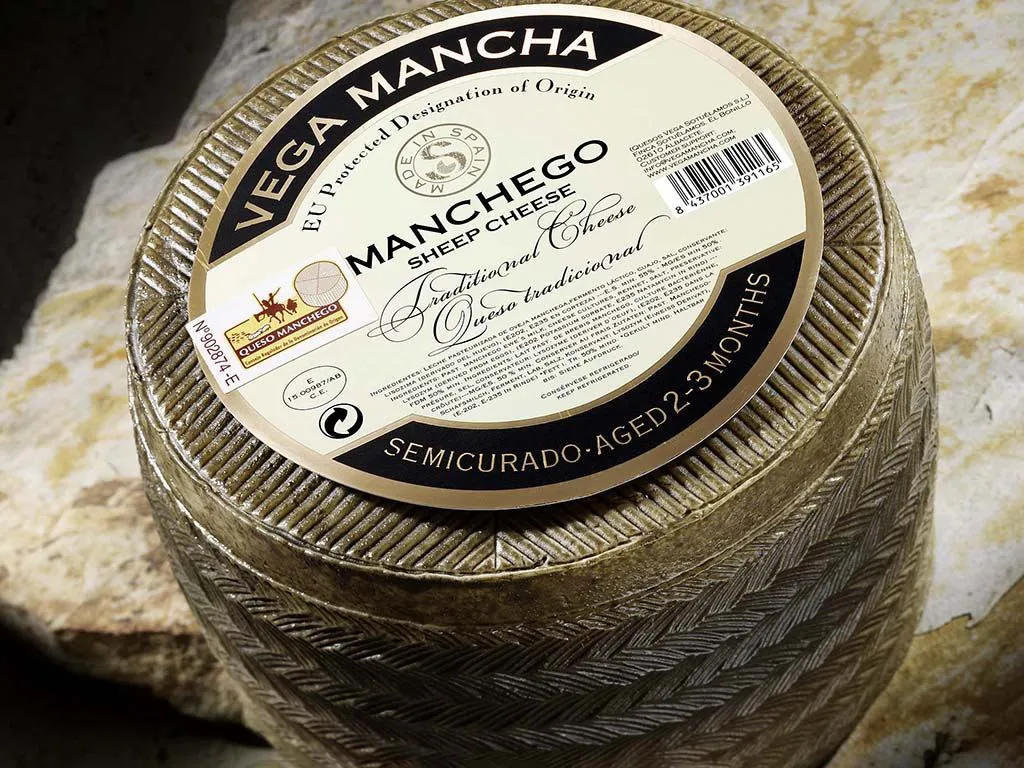
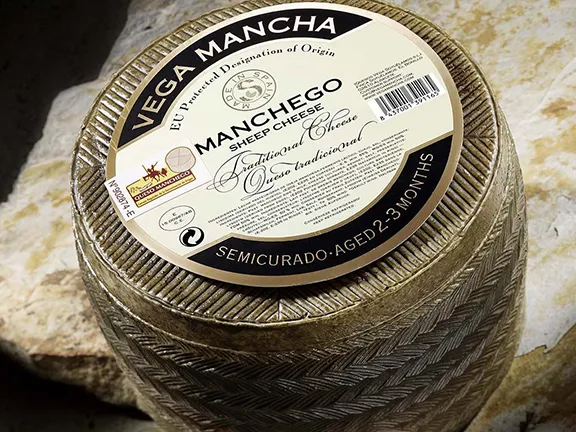
Manchego is the most famous of all Spanish cheese. It is a hard cheese made from Manchega sheep milk and is aged between 60 days and two years. It has a slightly nutty and tangy flavour, quite mild as a semi curado more pronounced as a curado. This is the one you will find thinly sliced on tapas menus. Try it with serrano jamon as the Spanish do.
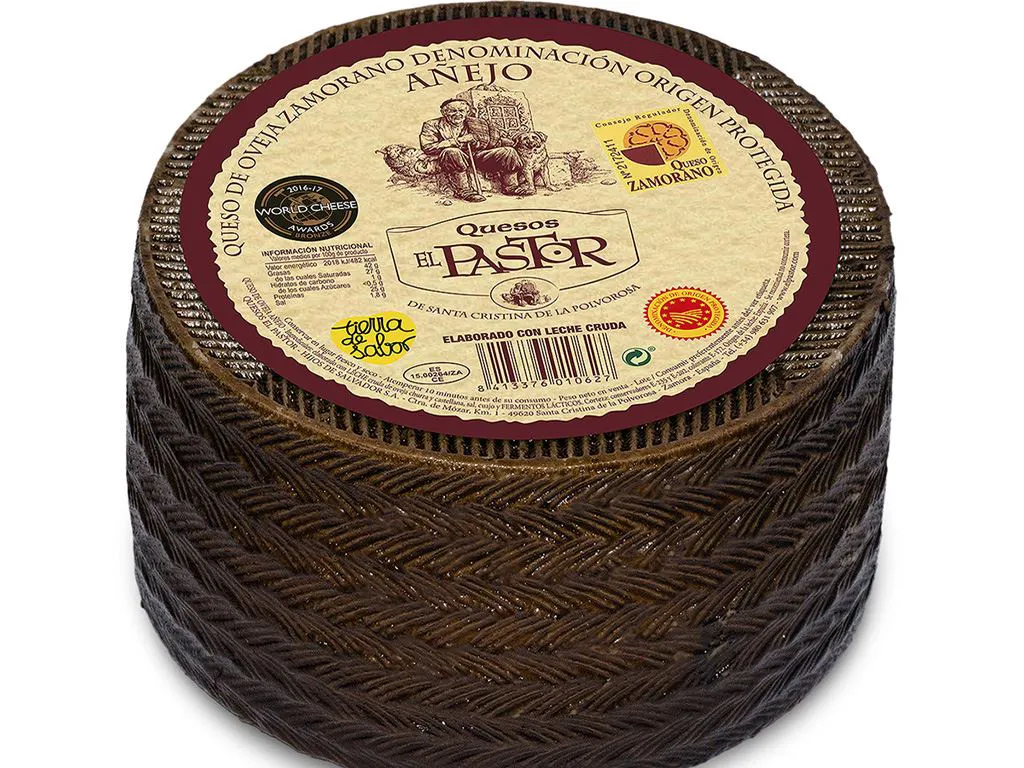
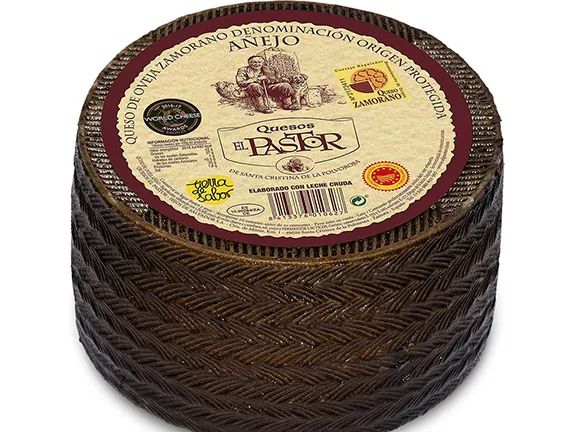
Zamorano is a sheep’s cheese, made in the province of Zamora. It is a hard cheese that takes six months to mature. It is similar in flavour to Castellano or Manchego cheese but has a more crumbly texture. Good in hot cheese sauces.
Valdeón is a blue cheese from the northeast of the province of León. It is made from either cow or sheep milk or a mixture of both. This is the cheese that you see wrapped in sycamore, maple or chestnut leaves before being sold. Another good dessert cheese.
Castellano is similar in flavour and texture to Manchego. It is a sheep’s milk cheese that is aged for six months and has a sweet nutty flavour. Try this cheese in a pesto for a wonderful summery taste that you can use on poultry, fish or pasta. Basil, olive oil, pine nuts, garlic, salt, black pepper and Castellano cheese. You will find the cheese compliments the taste of the pine nuts.
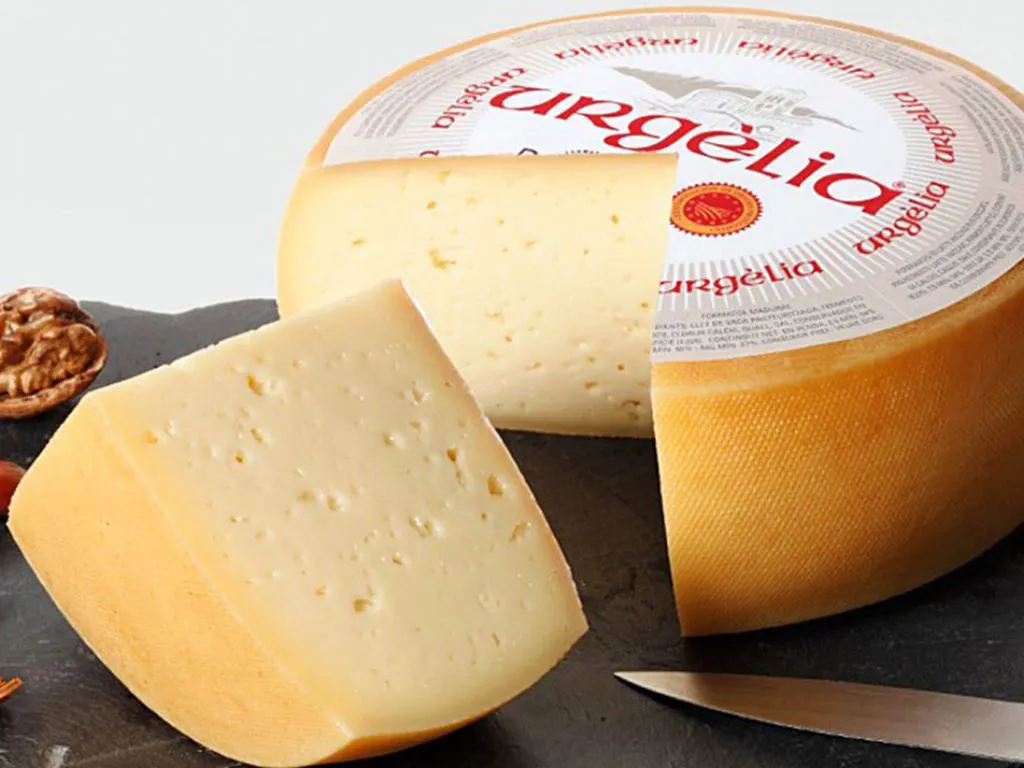
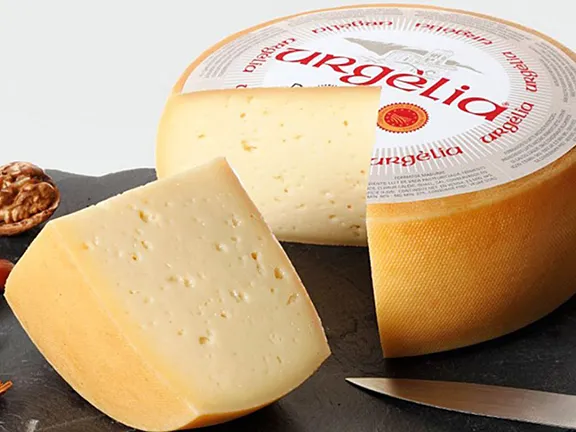
Alt Urgell y la Cerdanya is produced in the eastern Pyrenees, it was invented at the beginning of the 20th century and is made from pasteurised milk from Friesian cows, which is matured for one month. It is creamy and sweet with a mild flavour. Ideal for cheese on toast and toasties.
Tetilla is the most famous of the Galician cheeses, known for its unique shape which resembles a breast, hence the name. The rind is a pale lemon colour. Tetilla is made from cow’s milk and is both light and soft with a salty and mild taste.
Arzúa–Ulloa means ‘cheese from the land’. It is a cow’s milk cheese and is both pale and soft and creamy. It’s often eaten as a dessert cheese and is also great for melting.
San Simón da Costa is a smoked cheese made from pasteurised cow’s milk and is made in the area of Lugo. San Simón da Costa is known for its iconic tear-drop shape and is semi-hard with a buttery and woody texture.
Cebreiro cheese is made from the milk of white Galician cows, as well as the Alpine brown variety. It has a bulging mushroom shape and can be aged for up to 45 days. It is a soft white cheese that has a milky, yet slightly spicy flavour.
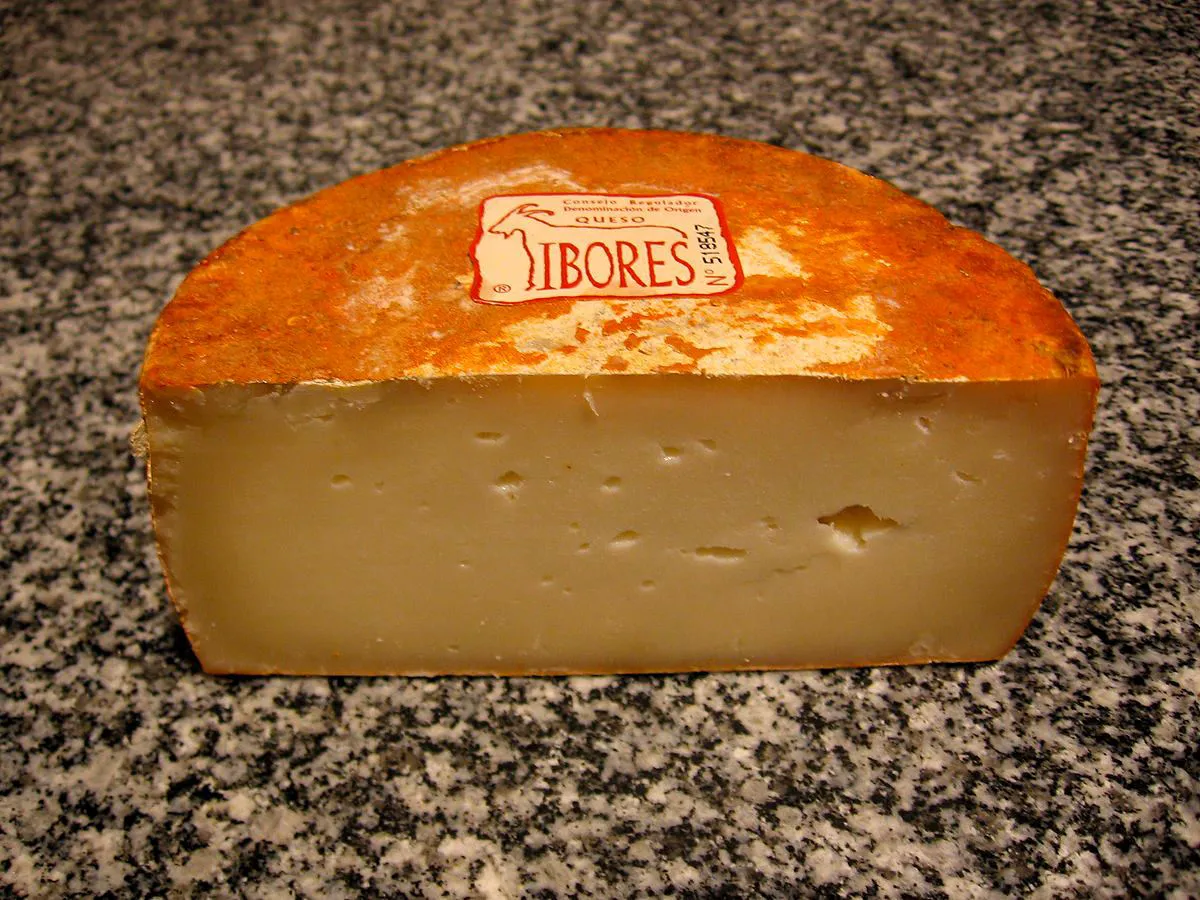
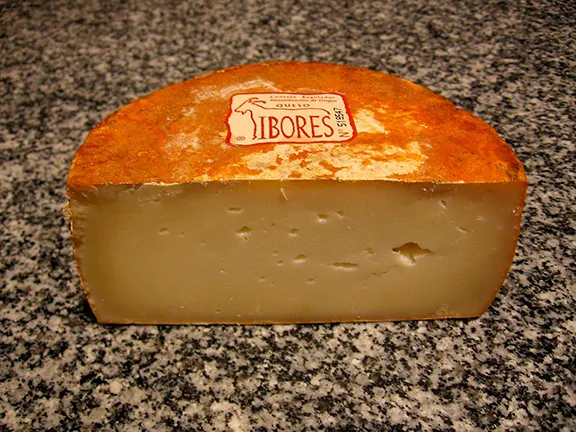
Ibores is made from unpasteurised goat’s milk. This rich cheese is aged for two months and is treated with smoked paprika and olive oil during the ageing process. It is an acquired taste, the paprika gives it a smoky taste on top of the flavour of a fairly young, yet rich cheese.
Torta del Casar is made from raw sheep’s milk using traditional techniques. It is a unique cheese because of its semi-hard exterior and very soft and creamy interior. It is both aromatic and intense with a slightly bitter aftertaste. This cheese is best as a dessert cheese with sticks of carrot or celery.
La Serena is a cheese made from Merino sheep’s milk in the area of La Serena. It has a strong, bitter and sharp flavour and is matured for at least 60 days. Fully matured cheeses are soft and creamy and can be scooped out with a spoon. This cheese is good with fruit.
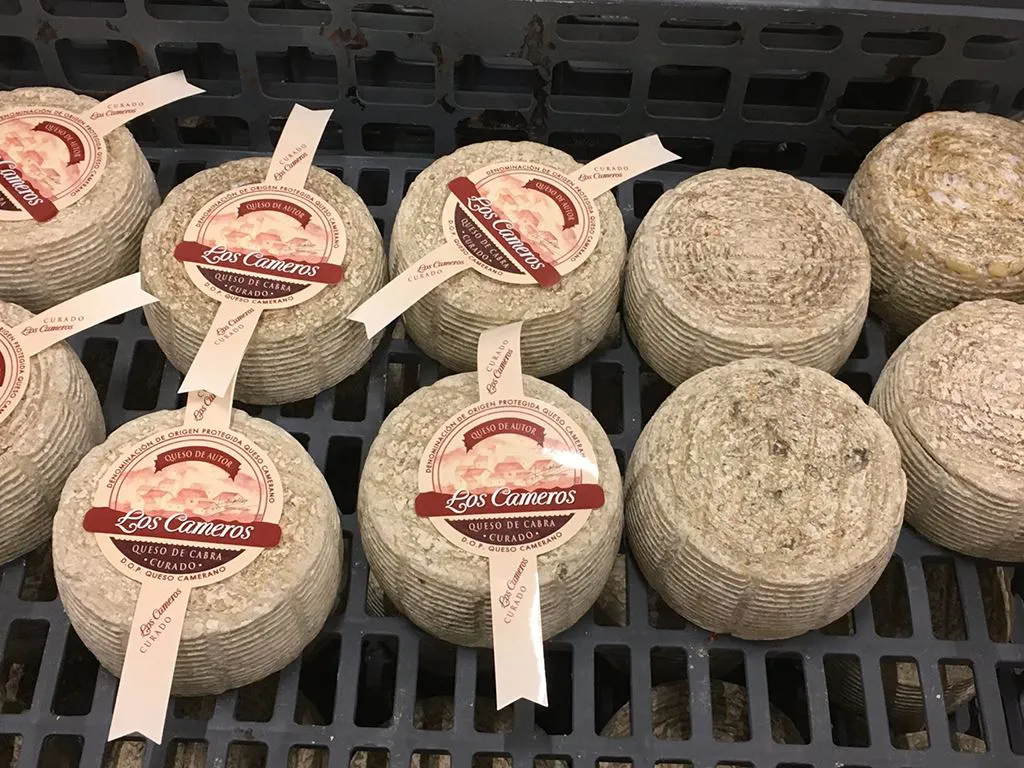
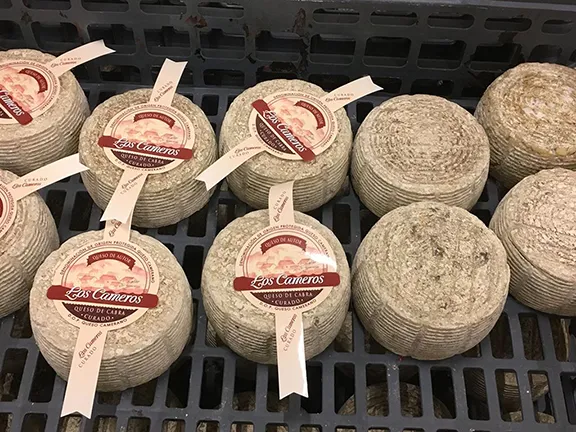
Camerano is made in the Sierra de Cameros in La Rioja in a tradition dating back 700 years. It is made from goat’s milk and is aged over 75 days, giving it an aromatic and earthy flavour. A good dessert cheese.
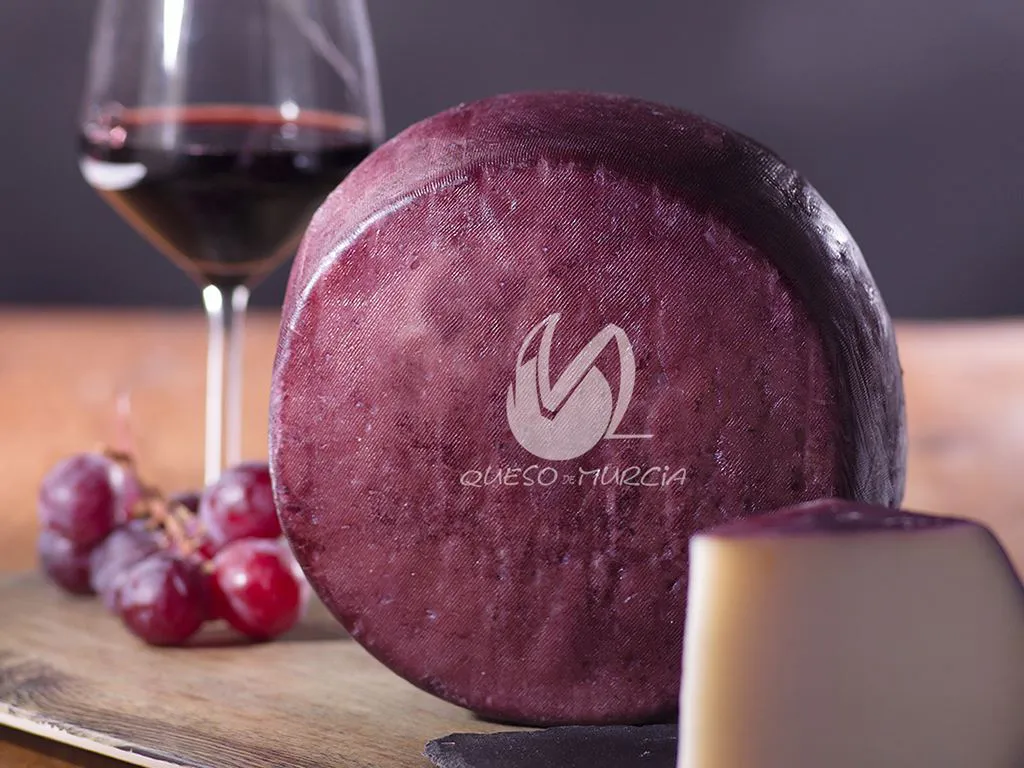
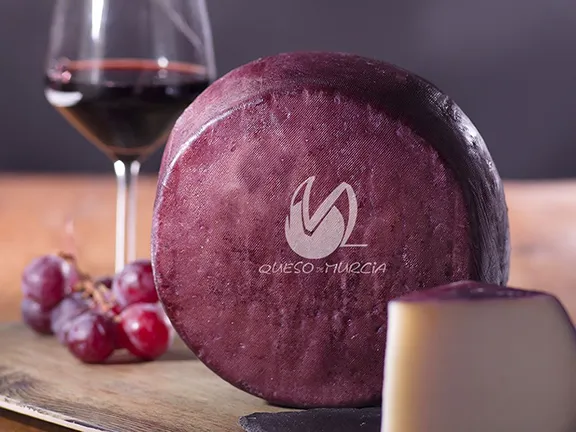
Murcia al vino is a unique cheese from Murcia. It is a very popular cheese, made from unpasteurised milk from Murcian breeds of goat. The cheese is soaked in red wine during ripening, which gives it a slightly acidic and floral aroma. Another dessert cheese, fantastic with Christmas mince pies.
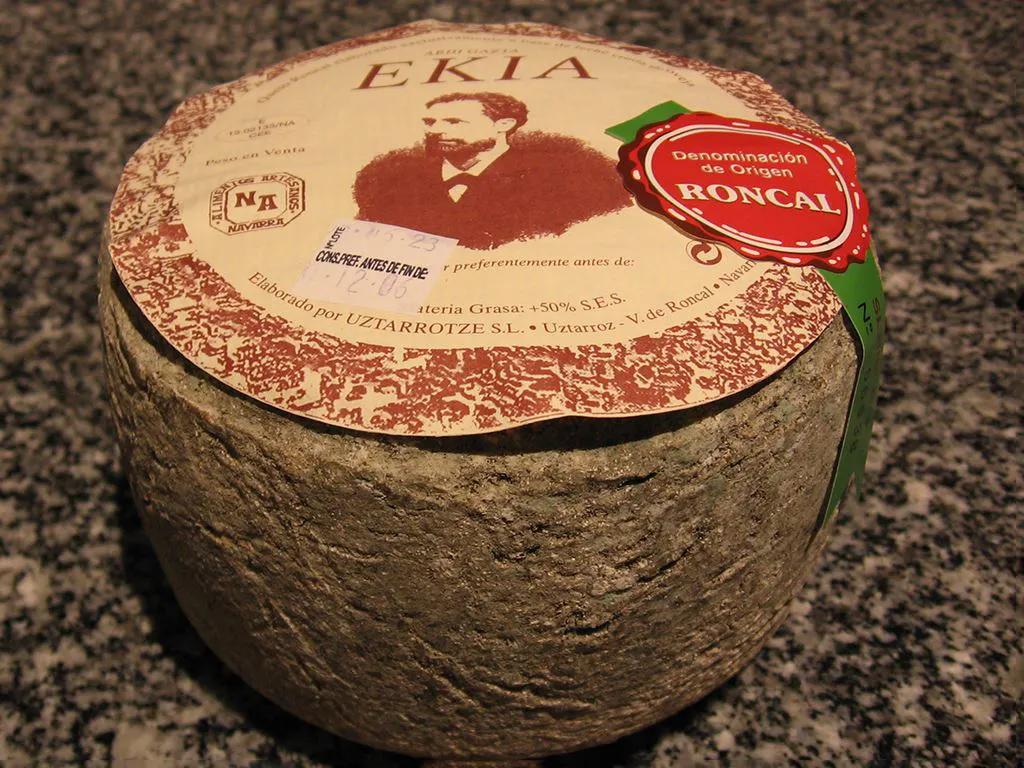

Roncal was the first of the Spanish cheeses to gain DOP-protected status. It is made in the Roncal Valley using fresh sheep milk from the Rasa and Lacha breeds and is aged for six months. It has a velvety smooth texture and is covered with veins of blue mould. All you need with this cheese is some crusty bread and a cold bottle of white wine.
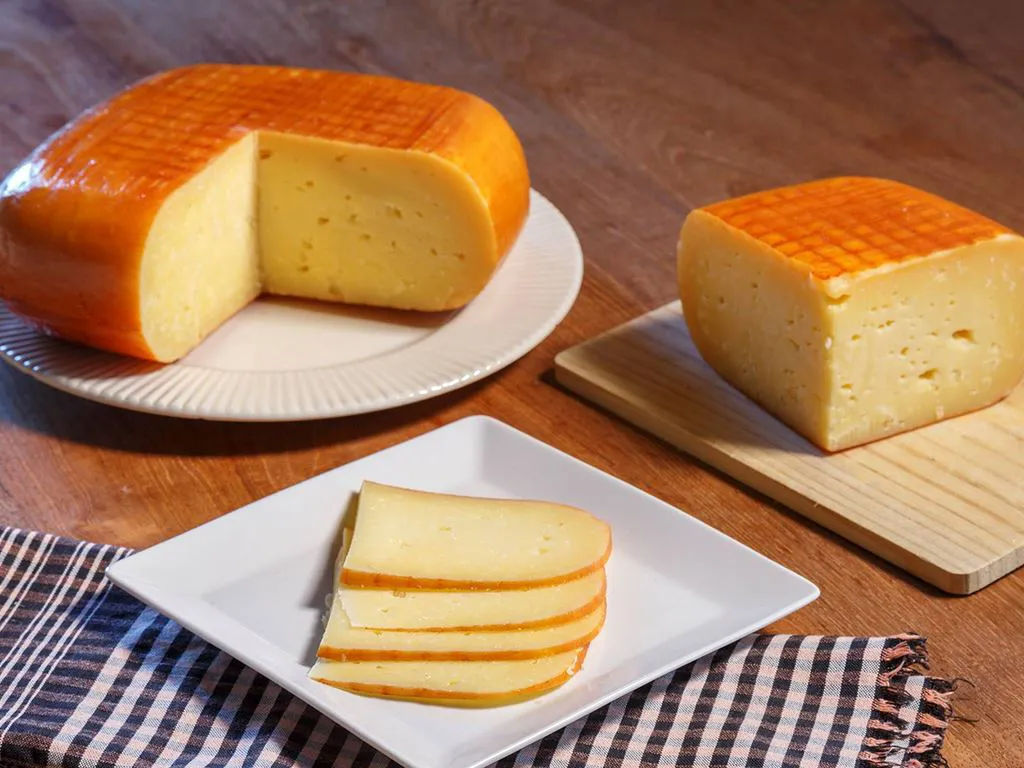
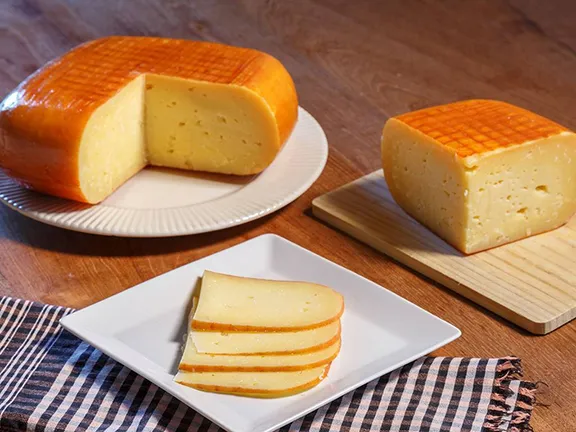
Maó or Mahón cheese is from the island of Menorca. It is a white semi-hard cheese, made from cow’s milk. It manages to be both crumbly and dense with a buttery, salty flavour and is aged for two to three months. Try this cheese in a classic cheese omelette.
Palmero has been made on the island of La Palma for centuries. It is made from unpasteurised goat’s milk. The goats are allowed to roam free and graze year round on wild plants. It has a slightly smoky flavour. If you come across this cheese treat yourself to a hot bacon and cheese sandwich. Very naughty but nice.
Flor de Guía is made on Gran Canaria This cheese is made from Canarian sheep milk, with some cow and goat milk added. It can either be soft or semi-hard and is curdled using vegetable rennet made from dried flower heads which gives it a unique earthy flavour. Lovers of macaroni cheese should try using Flor de Guía instead of a mature cheddar.
Majorero is from Fuerteventura and was the first Canary Island cheese to be awarded the designation of origin label. It is made from the milk of the native island goat. During the ripening process, it is covered with sea salt, paprika, gofio flour or oil and it has an intensely creamy texture. All you need with this cheese is some crackers.
The Sierra de Cádiz Cheese Producers Association has been working since 2014 to achieve this Protected Designation of Origin for Sierra de Cádiz Cheeses.
The production of these artisan cheeses is included in the historic region of the Sierra de Cádiz, made up of the municipalities of: Alcalá de los Gazules, Alcalá del Valle, Algar, Algodonales, Arcos de la Frontera, Benahocaz, Bornos, El Bosque, El Gastor, Espera, Grazalema, Jerez de la Frontera (up to the left bank of the Guadalete River), Jimena de la Frontera, Olvera, Paterna de la Rivera, Prado del Rey, Puerto Serrano, San José del Valle, Setenil de las Bodegas, Torrealhaquime , Torrecera, Ubrique, Villamartin, Villaluenga del Rosario and Zahara de la Sierra.
The cheeses put forward for the award are made from milk from the Payoya and Merina de Grazalema Autochthonous Goat Breeds.
A few years ago during one week in November, Julie and I were staying in a small hotel or hostel, in El Bosque, using it as a base for walking and exploring the Parque Natural de la Sierra de Grazalema. Attached to the hostel was a restaurant, the menu of which included a huge array of game dishes from wild boar to venison, grouse, partridge, mountain goat and rabbit. All the dishes were prepared in a traditional manner and were mouth watering. We ended up staying an extra two nights just to wade our way through the menu.
When we eventually checked out the proprietor was so pleased that we had enjoyed his wife's cooking that he presented us with two full Sierra de Cádiz cheeses, one of which was coated in olive oil and paprika. They were delicious and worthy of inclusion in the Protected Designation of Origin list, well, we think so.
In addition to the Protected Domination of Origin awarded to the best cheeses, most of the over 200 cheeses found in Spain are also graded according to the length of time they have been given to mature.
Fresco: fresh cheese which has not been cured or aged
Semi curado: semi-cured cheese which has been aged for two or three months
Curado: cured cheese that has been cured for upwards of 4 months.
You will then find Curado cheeses that have been matured for up to, and occasionally more than, 12 months.